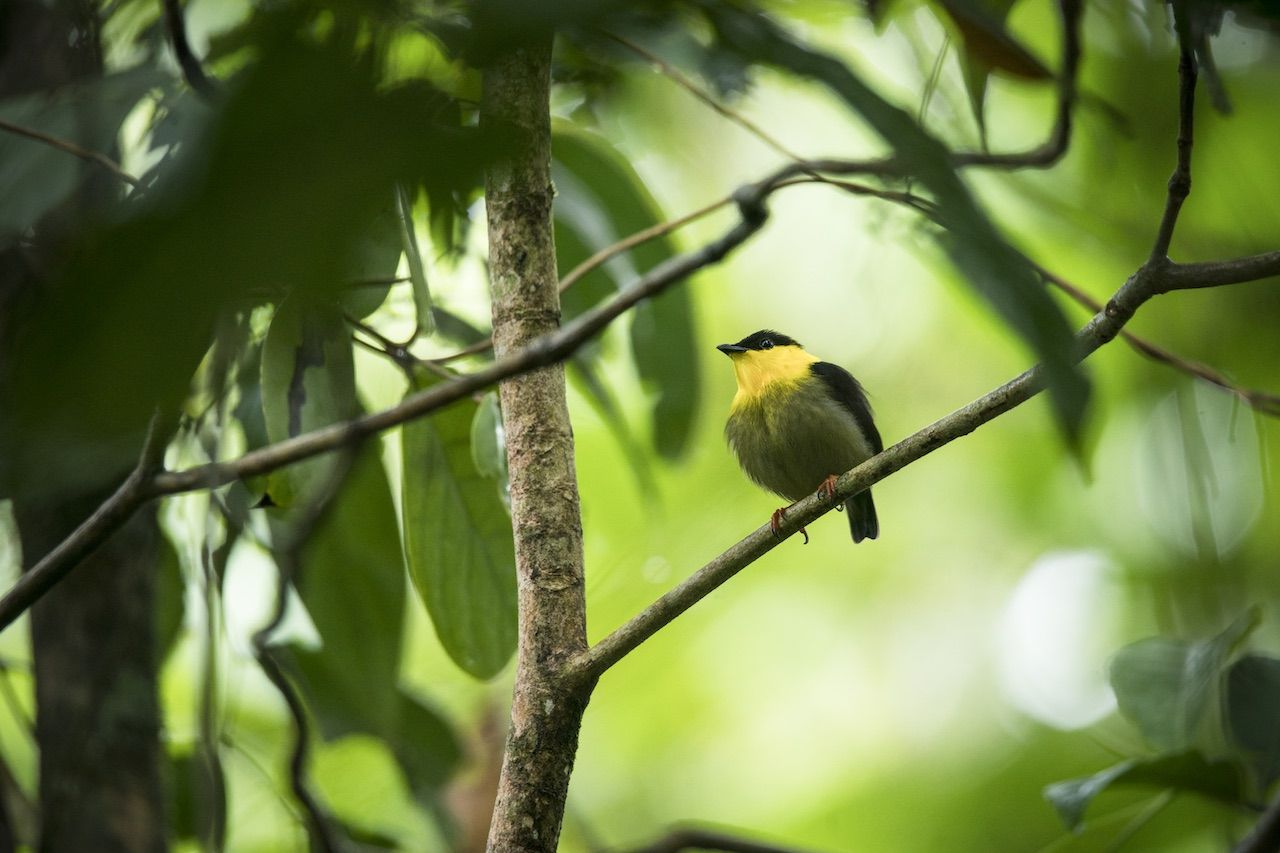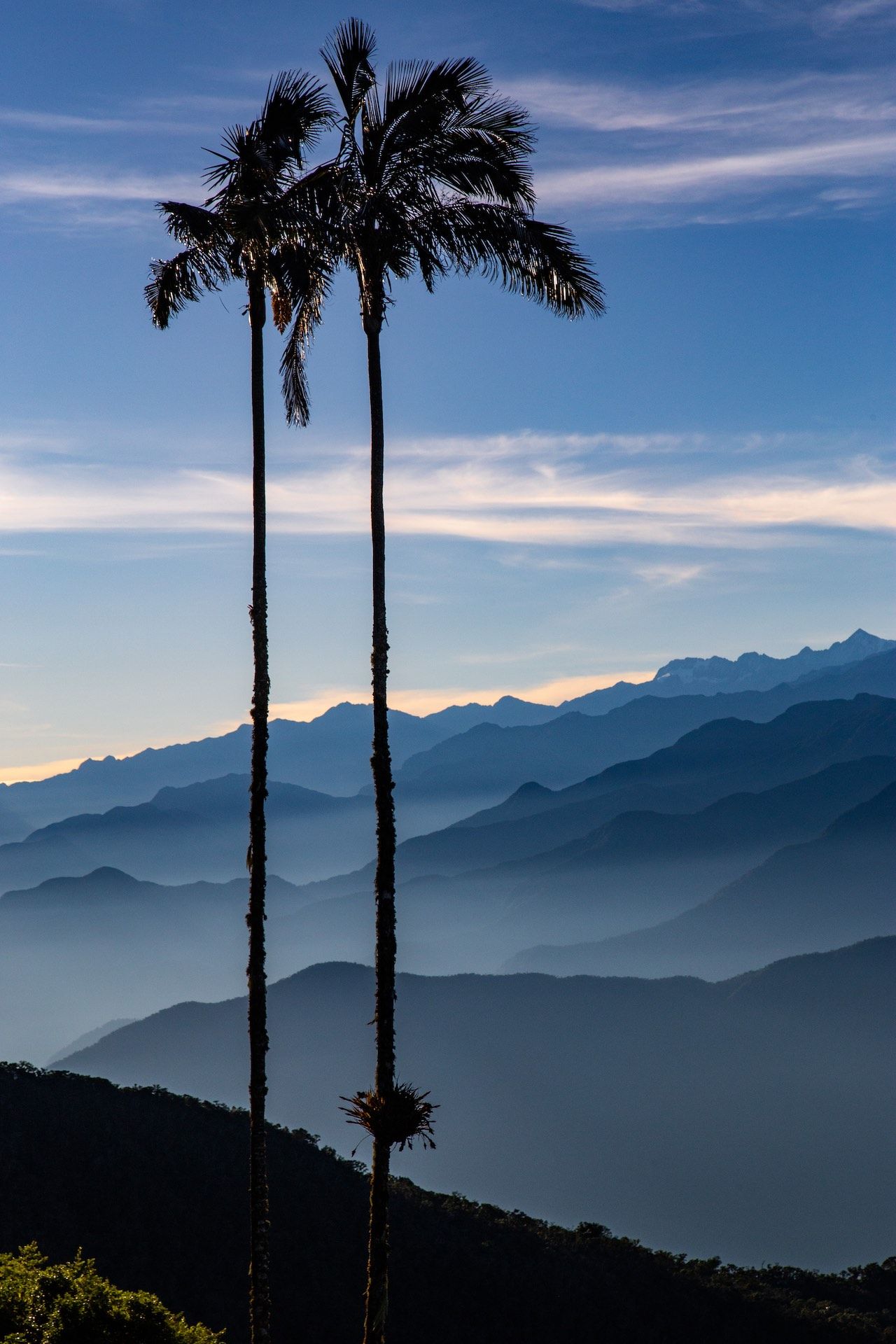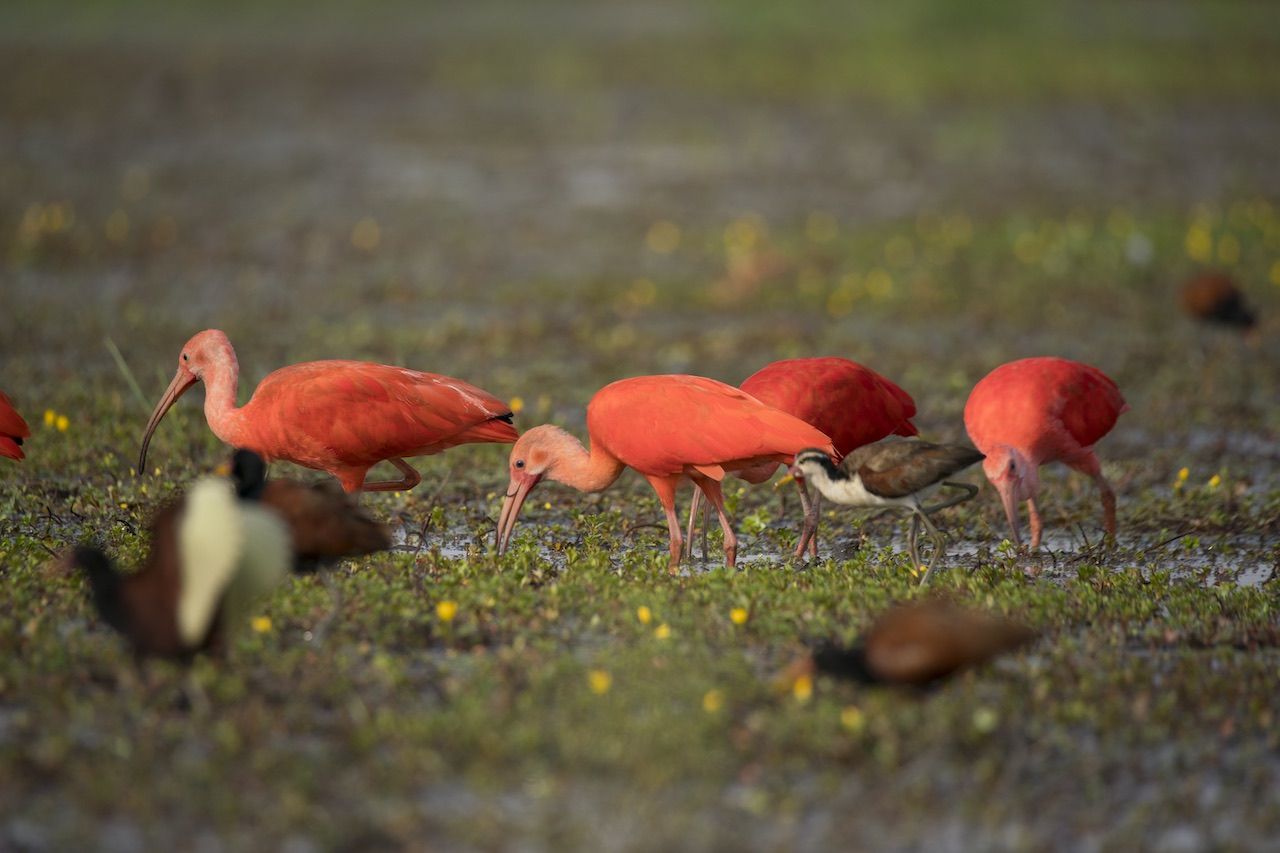Colombia is one of the most biodiverse countries on the planet. So many different ecosystems collide here — the volcanic beaches at sea level rise to the high peaks of the Sierra Nevada de Santa Marta in a matter of miles, for instance — creating environments that attract all kinds of wildlife. Bird species alone number nearly 2,000, the widest variety you’ll find anywhere.
Birding hotspots dot all of the country’s regions and showcase some pretty stunning landscapes. You’ll be scouting for dozens if not hundreds of species throughout Colombia’s tropical forests, up in the Andes, and in the salty air of the Caribbean — here’s where to begin.
Chocó

Photo: ProColombia
Simply put, Chocó — Colombia’s west coast, essentially — is one of the world’s busiest bird migration corridors. And while thousands of birds fly through here on their way to cooler climates, Chocó is also home turf for many endemic species. Hence its status as such a great spot for birdwatching.
Start your journey at El Almejal Natural Reserve in Bahía Solano, right on the Pacific Ocean and not far from Utría National Natural Park. Unlike most other locations mentioned in this guide, El Almejal offers onsite eco-lodging — this way, you can play by the birds’ schedule rather than simply stopping in for a quick visit with fingers crossed.
Then there’s Las Tangaras Bird Reserve, home to two related celebrity species: the gold-ringed tanager and the black-and-gold tanager. The reserve is located in Carmen de Atrato, and it also has comfortable eco-lodging with modern amenities. It’s an especially amazing place for hummingbird lovers — 20+ species visit the feeder stations maintained by the reserve.
Other eye-catching species: Baudó oropendola, great curassow, blue cotinga
Tropical Andes

Photo: ProColombia
If you’re visiting the Colombian Andes with your sights set on some serious feather action, good luck choosing from all these options. Here are just four great spots where you can put your binoculars to good use:
- Cocuy National Natural Park, one of the better-known parks, is where to go to spy the Andean condor. Book a cabin at the nearby Refugio de Montaña Sisuma or scout out a designated camping area within the park to stay awhile.
- Los Nevados National Natural Park is home to dozens of species, two of the more famous being the grey-breasted mountain toucan and the bearded helmetcrest hummingbird — exclusive to this part of the world.
- Unlike most other places on this list, the smaller Corota Island Wildlife Sanctuary is mostly marshy wetland. Here, you might catch a glimpse of the Andean coot, the pied-billed grebe, and the black-crowned night heron.
- Guácharo birds (or oilbirds) live in the caves of Cueva de los Guácharos National Natural Park, giving the park its name. If you don’t mind a muddy trek (and want to see these majestic caves), definitely put this spot on your list.
Other eye-catching species: black-chested buzzard-eagle, Guianan cock-of-the-rock, flame-winged parakeet, Fuertes’s parrot, brown-banded antpitta, house wren, black-and-chestnut eagle, red-crested cotinga, slaty brush finch, rufous-collared sparrow
Mountains of the Sierra Nevada de Santa Marta

Photo: ProColombia
Nope, not the Andes — the tallest peaks in Colombia are actually found in the Sierra Nevada de Santa Marta, the highest coastal range in the world. And while you might think the elevation would weed out fragile fliers, just ask the seven species of hummingbirds endemic to Sierra Nevada de Santa Marta National Natural Park. Wildlife actually gets heartier down in the foothills and nearer the ocean — in Tayrona National Natural Park, the roadside hawk, yellow-headed caracara, and king vulture rule the white-sand beaches and inlets.
But the large national parks don’t hog all the birding headlines here. To catch the real-life version of everyone’s favorite lawn bird, head to Los Flamencos Fauna and Flora Sanctuary, a habitat for colorful birds like the flamingo and the vermillion cardinal. Or, if it’s the frigatebird you’re after, know that they nest in the volcanic cays of McBean Lagoon Old Providence National Nature Park. A visit here takes you off the mainland and to Providencia Island, technically closer to the shores of Nicaragua. The island is part of a small, fairly isolated archipelago in the Colombian Caribbean — in addition to wildlife, the park helps protect the world’s third-largest reef.
Other eye-catching species: black-fronted wood-quail, little tinamou, Andean condor, Santa Marta parakeet, Santa Marta warbler, pale-vented pigeon
Orinoquía Region

Photo: ProColombia
The Orinoquía Region, in the country’s east, encompasses three national parks — here’s what you need to know:
- Sierra de La Macarena National Natural Park is where the flora and fauna of three different regions meet: the Orinoco, the Andes, and the Amazon. The rainforest turns into savanna here, and the geological star of the show? Caño Cristales, the “River of Five Colors” (which might just be as vibrant as the local avian life).
- In Chingaza National Natural Park, be prepared to leave your cell phone behind and disconnect — this remote area can only be visited via private vehicle, and you have to request permission to enter at least 15 days in advance. Chingaza means “middle of the width” in Chibcha (an extinct indigenous language), a terse attempt at summing up the beauty of the Andes’ eastern slopes.
- El Tuparro National Natural Park comprises a landscape of savanna broken up by large rivers, mangrove swamps, and gallery forests. Most visitors come for the Maypures Torrent, but the ones in the know are drawn by the wildlife. Note: Visitors are only allowed in when accompanied by a registered guide.
Eye-catching species to look for: grey tinamou, black curassow, guans, Orinoco piculet, scarlet ibis, storks, black-billed (and white-throated!) mountain toucan
Colombian Amazon

Photo: ProColombia
The Amazon is certainly one of the most important places on Earth when it comes to conservation and biodiversity, and while the Colombian Amazon is tiny compared to its Brazilian counterpart, the variety of species present here is still significant.
Amacayacu National Natural Park is the main eco-destination of the region. The name means “river of the hammocks” in Quechua, and it’s the only Colombian park that protects the forested floodplains of the Amazon. While Amacayacu technically has a visitor center, don’t bother GPSing it — it’s been closed for many years now, and there’s no specified date for reopening. This means you’ll either need to stay in nearby Leticia or in basic accommodation offered in local villages. And “basic accommodation” here means, of course, hammocks. Luckily, “from a hammock” is the perfect way to wile away the hours in the company of 470 species of birds.
Eye-catching species to look for: tinamou, gallinule, wattled curassow, grey-winged trumpeter, razor-billed curassow, wood stork, macaw

